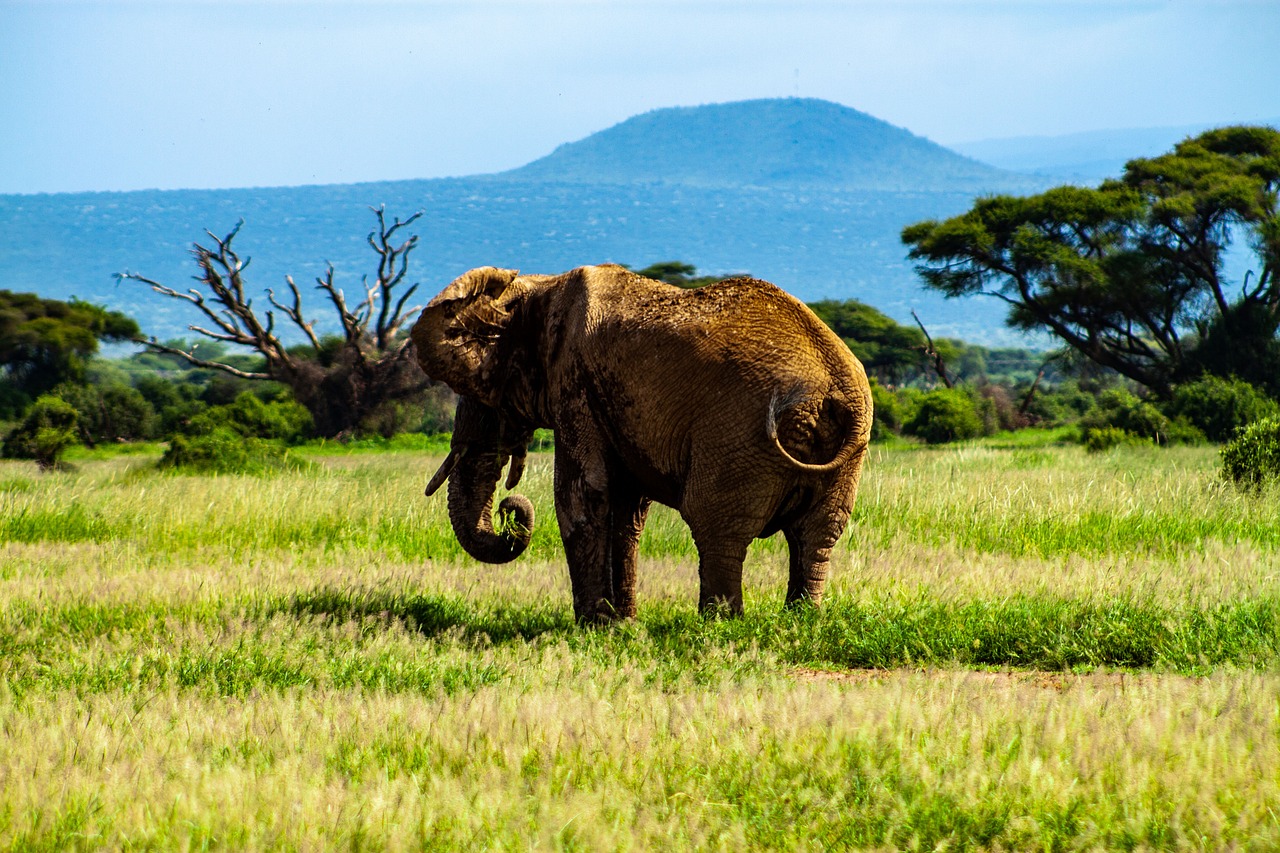Amboseli National Park
[vc_row][vc_column][vc_single_image image=”1316″ img_size=”full”][/vc_column][/vc_row][vc_row][vc_column][vc_column_text]Amboseli National Park: A Majestic Safari Destination
Amboseli National Park, located in southern Kenya near the border with Tanzania, is one of the country’s most iconic wildlife reserves. Established in 1974, the park spans approximately 392 square kilometers and is renowned for its stunning views of Mount Kilimanjaro, Africa’s highest peak. Amboseli National Park is particularly famous for its large elephant herds and diverse ecosystems, making it a must-visit destination for wildlife enthusiasts and safari adventurers alike.
A Sanctuary for Elephants
One of the standout features of Amboseli National Park is its thriving population of elephants. The park is home to one of the largest herds of African elephants in the world, with over 1,500 individuals calling this area home. Visitors to Amboseli can witness these magnificent creatures in their natural habitat, often seen grazing in the open plains against the stunning backdrop of Mount Kilimanjaro.
The Amboseli Elephant Research Project has been instrumental in studying and conserving these majestic animals. This long-term research program has provided valuable insights into elephant behavior, social structures, and conservation efforts, making Amboseli National Park a vital location for elephant conservation.
Diverse Wildlife and Unique Ecosystems
Beyond its elephant population, Amboseli National Park boasts an incredible variety of wildlife, including lions, cheetahs, giraffes, zebras, and buffaloes. The park’s diverse ecosystems, which include swamps, grasslands, and woodlands, support over 100 species of mammals and more than 400 species of birds. This biodiversity makes Amboseli a fantastic destination for both wildlife viewing and birdwatching.
The park’s swamp areas, fed by the melting snows of Mount Kilimanjaro, are particularly important for birdlife, attracting a wide range of waterfowl and migratory species. Visitors can spot vibrant species such as the African fish eagle, pink-backed pelicans, and various storks.
Stunning Landscapes and Views
Amboseli National Park is renowned for its breathtaking landscapes, with the towering Mount Kilimanjaro dominating the skyline. The park’s open plains provide incredible vantage points for photography, especially during sunrise and sunset when the light creates dramatic contrasts against the mountain.
In addition to the iconic views of Kilimanjaro, the park features diverse habitats, including acacia woodlands, swamps, and grasslands. This variety of ecosystems allows visitors to experience the natural beauty of the African savannah while spotting a wide range of wildlife.
Cultural Encounters with the Maasai
Visitors to Amboseli National Park have the unique opportunity to engage with the local Maasai community, who have coexisted with wildlife in the region for generations. The Maasai people are known for their rich cultural heritage, traditional customs, and vibrant attire.
Cultural visits to Maasai villages provide insight into their way of life, including traditional ceremonies, crafts, and livestock management. These interactions not only enrich the visitor experience but also support local communities through responsible tourism practices.
Accessibility and Visitor Experience
Amboseli National Park is easily accessible from Nairobi, making it a popular destination for both short visits and extended safaris. The park is well-equipped to accommodate tourists, with various lodges and camps offering comfortable accommodations and guided safari experiences.
Visitors can choose from a range of activities, including game drives, guided nature walks, and cultural visits to Maasai villages. The park’s well-maintained roads make it easy to explore and maximize wildlife sightings.
Best Time to Visit Amboseli National Park
The best time to visit Amboseli National Park is during the dry seasons, which typically occur from June to October and January to February. During these months, wildlife is more concentrated around water sources, making it easier to spot animals. The clear skies during the dry season also offer stunning views of Mount Kilimanjaro.
The rainy seasons, from March to May and November to December, can also be a beautiful time to visit, as the landscape becomes lush and green. However, some roads may become muddy and difficult to navigate during heavy rains.
Conservation Efforts and Sustainability
Amboseli National Park plays a crucial role in wildlife conservation in Kenya. The park’s management collaborates with various conservation organizations to protect its diverse ecosystems and wildlife populations. Efforts focus on habitat preservation, anti-poaching initiatives, and community engagement to ensure the long-term survival of both wildlife and local communities.
Sustainable tourism practices are essential to the park’s management. Entrance fees contribute to conservation efforts and local development, ensuring that both wildlife and communities benefit from the revenue generated by tourism.
Conclusion
Amboseli is a premier safari destination that offers visitors an unforgettable experience in the heart of the African wilderness. From its iconic views of Mount Kilimanjaro to its thriving elephant populations and rich biodiversity, the park provides a unique opportunity to connect with nature and witness the incredible wildlife of Kenya. As a vital part of the country’s natural heritage, Amboseli National Park invites travelers to explore its beauty while supporting conservation efforts that protect this remarkable ecosystem for generations to come. Whether you’re on a thrilling safari or engaging with the local Maasai culture, a visit to Amboseli National Park promises adventure and unforgettable memories.[/vc_column_text][/vc_column][/vc_row]




Comments are closed